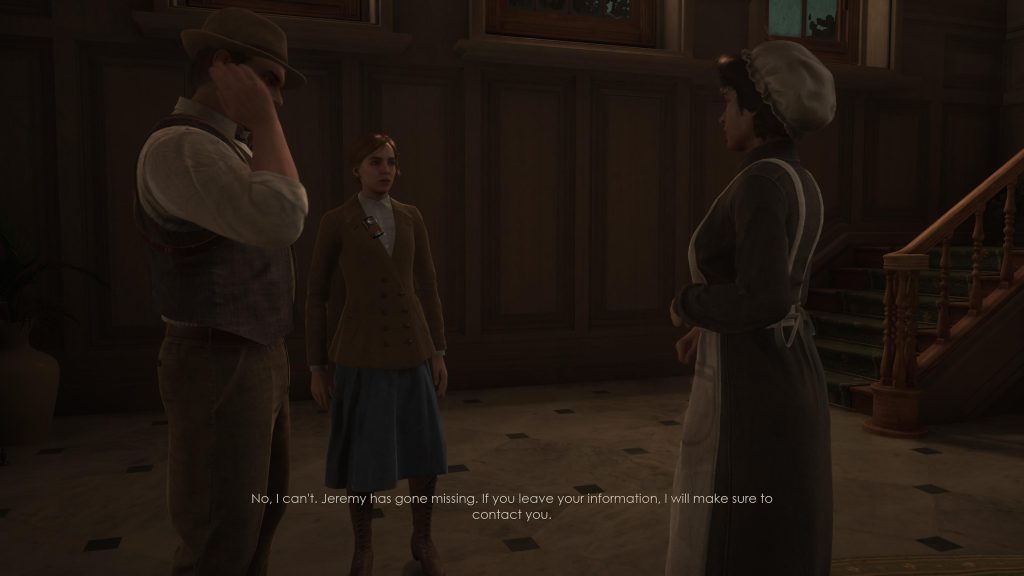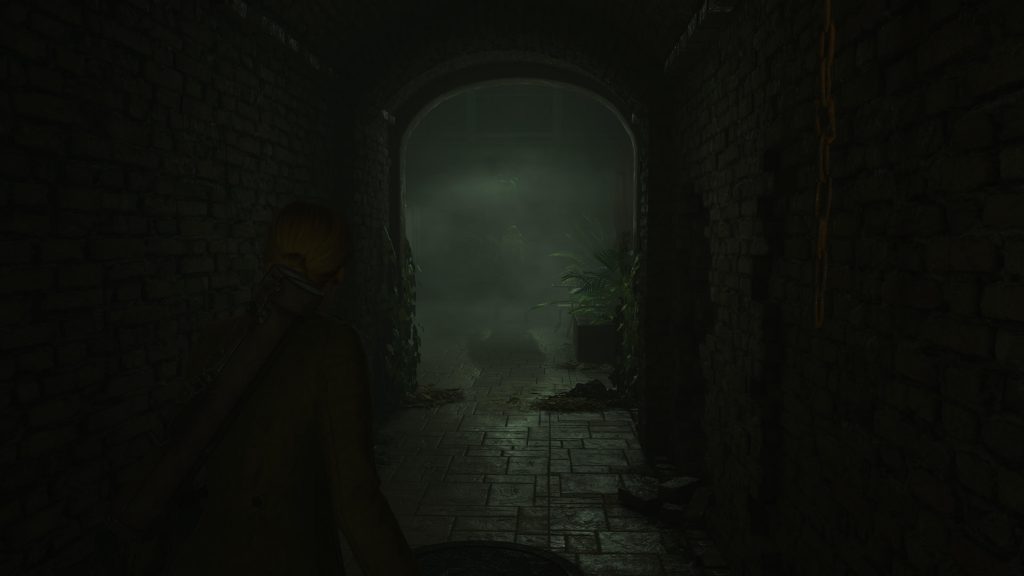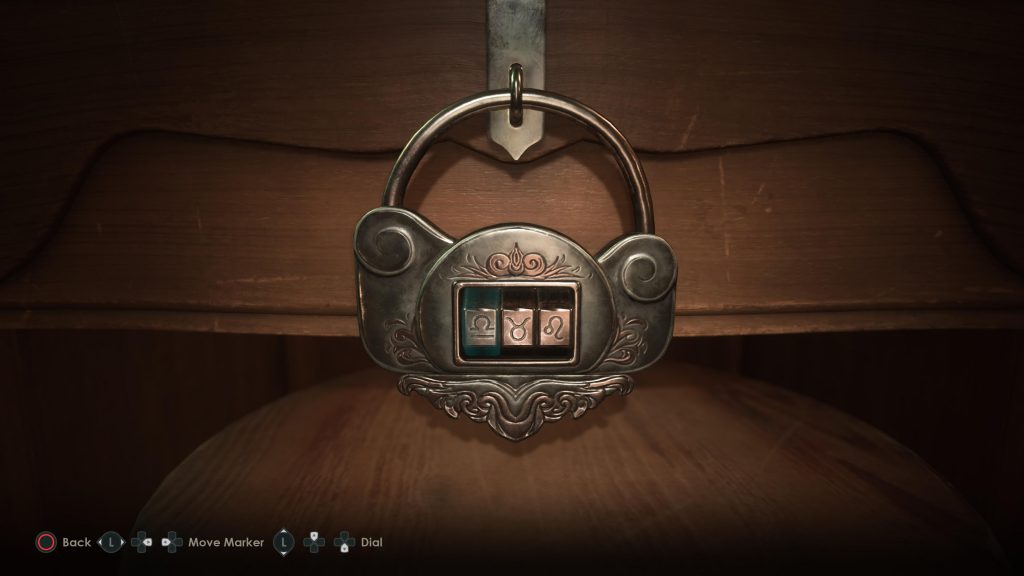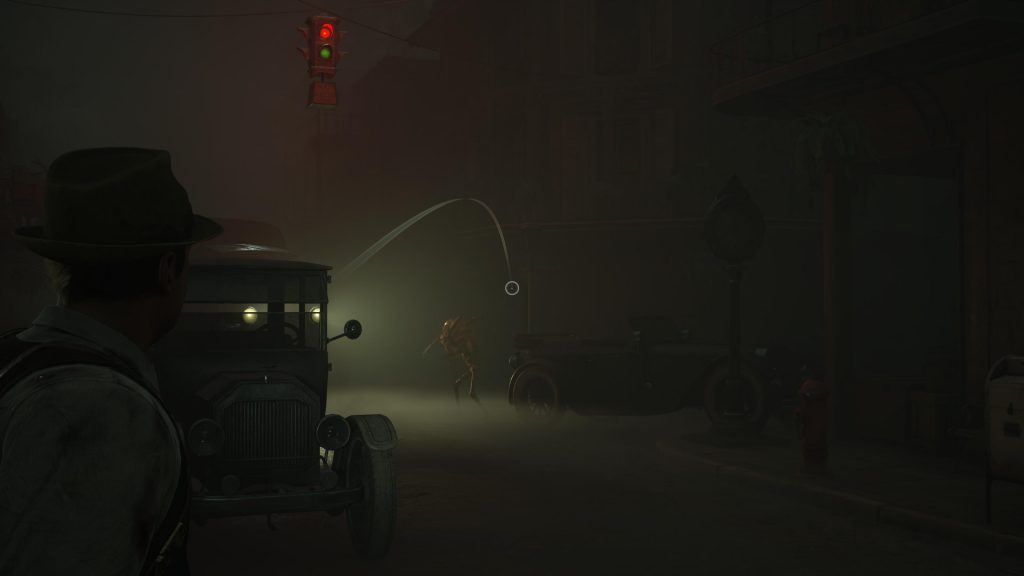I hope you’re keeping count because Alone in the Dark is the second time the seminal survival horror has hit the reset button. 2008’s first attempt didn’t seem to leave any long-lasting impression. In the shadow of more high-profile remakes, 2024’s edition appears to walk back to the series’ roots. Pieces Interactive are the latest studio to have keys to the property and, whilst it’s not reaching the heights of the past, it is at least creating something respectable on it’s own terms.
 The story takes place within a Louisiana convalescence house. The residents are in there mostly for reasons relating to mental health but it doesn’t take long for the tale to take on a Lovecraftian shape. One of those residents is Jeremy Hartwood who has mysteriously gone missing. As his diligent niece or detective Edward Carnaby, your job is to find Jeremy whilst uncovering the location’s storied past.
The story takes place within a Louisiana convalescence house. The residents are in there mostly for reasons relating to mental health but it doesn’t take long for the tale to take on a Lovecraftian shape. One of those residents is Jeremy Hartwood who has mysteriously gone missing. As his diligent niece or detective Edward Carnaby, your job is to find Jeremy whilst uncovering the location’s storied past.
As flesh and blood, Emily Hartwood has an established relationship with her uncle and the family history. There’s an alleged curse that haunts the bloodline which may have contributed to Jeremy’s frenzied state. Emily doesn’t want to succumb to said curse but, in a place like Derceto, it’s easier said than done. This does mean her dialogue has more of a personal touch and her stakes in the proceedings seem to have more weight than Carnaby’s. He is very much an outsider who initially appears sceptical to the supernatural goings on.
Over the course of a long night, the duo will discover more macabre elements, Jeremy’s fascination with a silent force called The Dark Man and some very explicit Eldritch horrors. It’s not new ground for the genre but, when compared to the survival horror contemporaries, the setting and plot do feel different. The time period also seems to land it squarely in line with the original Alone in the Dark. As a reboot, it has a right to do that but, once again, it firmly looks to distinguish itself from the Resident Evils and Silent Hills of the world.
 Do I think the story lands? Well, it certainly tries to flesh it out with diaries, notes and log entries. It’s clear the other residents are slightly off kilter. Ruth is a playful southern belle, Grace is a mischievous child. Meanwhile Batiste and his sister know more than they let on. Having two interlopers as protagonists does contrast well against the supporting cast. I do think the conclusion is a little goofy but I did feel the journey was enjoyable.
Do I think the story lands? Well, it certainly tries to flesh it out with diaries, notes and log entries. It’s clear the other residents are slightly off kilter. Ruth is a playful southern belle, Grace is a mischievous child. Meanwhile Batiste and his sister know more than they let on. Having two interlopers as protagonists does contrast well against the supporting cast. I do think the conclusion is a little goofy but I did feel the journey was enjoyable.
You can play either campaign from the start but neither seem to deviate at all. Having played Emily’s story to completion, I did hope Edward Canaby’s route through Derceto would be different. Unfortunately, he traverses the same route, solves the same puzzles and only the dialogue seems to change. That’s a shame because you barely cross paths with each other and I was hopeful they were doing their own thing and making their own investigations. Both are played expertly by Jodie Comer and David Harbour. Jeremy’s voice lines play up the theatrical a little as a timid, broken man but he pops up so infrequently as a persistent missing person.
The gameplay is primarily led by puzzle solving and exploration. Derceto is not a large location but the few floors and tricks it has do make for an intricate playhouse. I’ve heard some reviewers describe the puzzles as obtuse and cryptic but, in my experience, the solutions are always at hand. Providing you’re not missing out on clues, the cyphers are readily available. I had no trouble with any of them and, whilst it did give me the appearance of feeling clever, they’re not that deep.
 Should you struggle, there’s a hint system you can activate which will point you in the right direction. Your character might also spout some dialogue to further hammer it home. This does help maintain the pacing which I found to be pretty consistent. I finished the first campaign in around 11 hours which feels like refreshingly efficient. If you’re not the type interesting in collectibles, you could probably shave an hour off.
Should you struggle, there’s a hint system you can activate which will point you in the right direction. Your character might also spout some dialogue to further hammer it home. This does help maintain the pacing which I found to be pretty consistent. I finished the first campaign in around 11 hours which feels like refreshingly efficient. If you’re not the type interesting in collectibles, you could probably shave an hour off.
The house does contain chances to unlock shortcuts but I did find the experience to be a largely linear one. Areas are opened up slowly and the map continues the Resident Evil tradition of marking unfinished business and locked doors as you progress. Solvable puzzles are marked as you find more tools and clues. It is very handy and I rarely felt stuck or lacking in a place to go. There’s a decent sense of atmosphere to it all with ambience being favoured over music. When the story needs to get surreal, there’s changes of perspective and otherworldly switches that give the game a very rigid structure. Derceto is for puzzles, elsewhere is more suited for combat.
Combat is simple in its construction and does initially fit the survival horror framework. Ammo is not exactly scarce but clip sizes were small enough to force me into some uncomfortable reloads. It adds to the tension but the enemies themselves are pretty forgettable. They lack menace and variety with most encounters staying very small in scope. Two-on-one fights are as tricky as it gets with a couple of sections that frankly are designed for a retreat. The gunplay doesn’t have a great feel. Aiming takes a second to really dial in and reload animations can be interrupted by other actions. There’s a dodge available that is surprisingly nimble and effective.
 There’s a couple of other tricks like an emphasis on early distractions and stealth. Add fire into the mix and then you’ve got a means for crowd control. Despite all this, Alone in the Dark doesn’t seem to pour the combat on thick. To be honest, the tools available just aren’t adequate for the job. The game’s structure seems to much prefer engaging with the puzzles. Fights seem cordoned off in the more dreamlike sequences and, whilst I could sneak past enemies, I preferred to deal with them in a more final sense.
There’s a couple of other tricks like an emphasis on early distractions and stealth. Add fire into the mix and then you’ve got a means for crowd control. Despite all this, Alone in the Dark doesn’t seem to pour the combat on thick. To be honest, the tools available just aren’t adequate for the job. The game’s structure seems to much prefer engaging with the puzzles. Fights seem cordoned off in the more dreamlike sequences and, whilst I could sneak past enemies, I preferred to deal with them in a more final sense.
Maybe it’s the optimist in me but I did find what Alone in the Dark was offering to be interesting. The focus on puzzle solving and narrative does give the game a more thoughtful atmosphere. I didn’t find it oppressive but the grounded location gives the game a good sense of place. The residents were just off enough to provoke some unease but the performances of the main leads help sell that. Combat seems like a minor diversion but there have been efforts to differentiate it from the typical genre luminaries.
+ Solid performances from the main cast.
+ Derceto is a nicely intricate location
+ Puzzles that make you feel smart, even if they're not that deep.
- Occasionally rough around the edges.
- The other campaign can feel a little redundant.
- The story can stray into daft territory.

